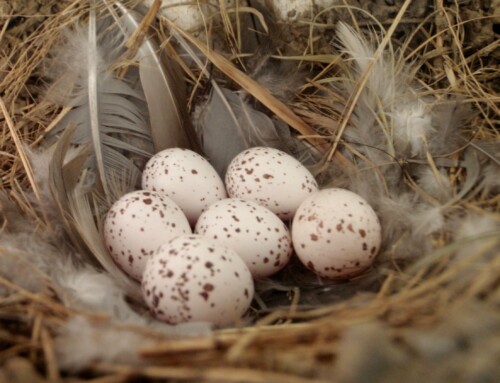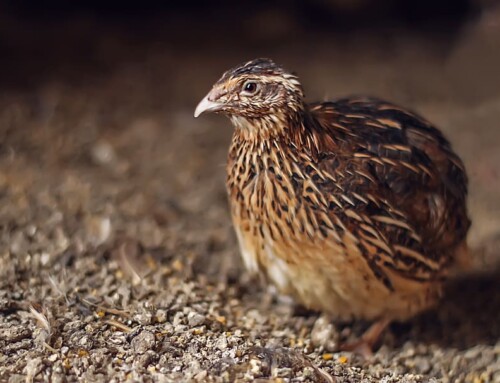LINKED PAPER
The role of partial incubation and egg repositioning within the clutch in hatching asynchrony and subsequent effects on breeding success. Diez-Méndez, D., Rodríguez, S., Álvarez E. & Barba E. 2019. IBIS. DOI: 10.1111/ibi.12730. VIEW
Birds rarely hatch the eggs of a clutch simultaneously. When visiting nests around their hatching date, it is common to find eggs and nestlings all together as the degree of asynchrony could last from few hours to several days. The link between hatching asynchrony and heat transfer to the eggs during the incubation is obvious but, which is the link between the repositioning of the eggs within the nest and the hatching asynchrony?
Triggering hatching asynchrony
If you were a Great Tit Parus major nestling, or belonged to another precocial species, the advantages of hatching before your siblings would be clear: you would grow bigger and heavier, increasing your chances of later survival (Amundsen & Slagsvold 1998). A side-effect of your advantage would be that your youngest siblings could starve and die. Beyond the dispute of whether this is a desired outcome for the parents or an inevitable side-effect (Stoleson & Beissinger 1995), hatching asynchrony is commonly thought to be a consequence of heating the laid eggs before the whole clutch is complete. There are two different behaviours that incubating parents display in order to heat the eggs during the laying period: displaying irregular incubation bouts (partial incubation), and/or fully incubating the eggs (Wang & Beissinger 2011). If any, or both, of these behaviours occur, the first eggs, or more correctly, the embryos within, would start their development even before the last eggs are laid. In this run, first eggs usually hatch earlier.
Small bodies and many eggs
Incubation behaviour is more complex than just laying on the eggs and heating them. Eggs need to be turned to avoid physiological problems during their development (Deeming 2009), and probably they also need to be continuously repositioned within the clutch. Why turning and repositioning and not just turning? Imagine a standard Great Tit clutch containing nine eggs, and compare it to the size of a female; she would be unable to cover the whole clutch with her brood patch. This inconvenience creates a temperature gradient in the clutch from the inner and warmest eggs, directly positioned under the brood patch, to the peripheral and coldest eggs, which have lost direct contact with it (Boulton & Cassey 2012). Given these temperature differences within the clutch, we hypothesised that the degree of hatching asynchrony could also be affected by the different distances of each egg to the centre of the clutch throughout the incubation period. If females move the eggs homogeneously between the centre (under the brood patch) and the periphery, the whole clutch will get the same amount of total heat, thus developing at the same speed and hatching synchronized. Otherwise, if some eggs are positioned longer under the brood patch, they would receive the necessary heat sooner than the outer ones, developing faster and consequently hatching earlier.

Keeping track of the eggs
To be able to track the different positions of the eggs during the incubation, we individually marked the eggs from 20 different nests with colour lines just after they were laid. When incubation started, we took pictures of the clutch twice per day until the first egg hatched. Of course we did not forget about the other two sources of hatching asynchrony mentioned above: we also avoided partial incubation experimentally (replacing real eggs for fake ones during the laying phase) and registered if full incubation before clutch completion happened, to rule out their effects. Do not doubt to check our paper if you are also interested in the effects caused by the avoidance of partial incubation in the experimental nests.

Figure 2 Experimental set up showing a nest with the eggs coded based on their laying order © Samuel Rodríguez
Rejecting the hypothesis
Unexpectedly, between-nest variability in egg repositioning was relatively low, and it was not related to the degree of hatching asynchrony. A possible explanation is that females react to thermal differences between eggs, moving cold eggs to the centre and warm eggs to the periphery of the clutch, thereby distributing the heat among all eggs. The remaining hatching asynchrony would then have a different origin than egg repositioning. Although Poláček et al. (2017) suggested that female House Sparrows Passer domesticus could alter hatching asynchrony through egg repositioning behaviour, this requires individual egg recognition, something not yet demonstrated in Great Tits. Despite these results, females with bigger clutches showed a higher degree of hatching asynchrony, suggesting that incubating more eggs involves higher difficulties to distribute heat equally among the eggs.
Nominate this article for a BOU Science Communication Award.
References
Amundsen, T. & Slagsvold, T. 1998. Hatching asynchrony in Great Tits: A bet-hedging strategy? Ecology 79: 295–304. VIEW
Boulton, R.L. & Cassey, P. 2012. How avian incubation behaviour influences egg surface temperatures: Relationships with egg position, development and clutch size. J. Avian Biol. 43: 289–296. VIEW
Deeming, D.C. 2009. The role of egg turning during incubation. Avian Biol. Res. 2: 67–71. VIEW
Poláček, M., Bartíková, M. & Hoi, H. 2017. Intraclutch eggshell colour variation in birds: are females able to identify their eggs individually? PeerJ 5: e3707. VIEW
Stoleson, S.H. & Beissinger, S.R. 1995. Hatching asynchrony and the onset of incubation in birds, revisited. When is the critical period? In: Current Ornithology (D. M. Power, ed), pp. 191–270. Plenum Press, New York. VIEW
Wang, J.M. & Beissinger, S.R. 2011. Partial incubation in birds: Its occurrence, function, and quantification. Auk 128: 454–466. VIEW
Image credits
Featured image: Great tit Parus major © Jéssica Jiménez-Peñuela




